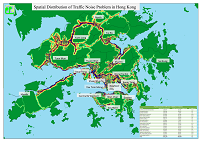This section aims to provide detailed information on the problem of noise and how noise pollution is controlled in Hong Kong. An overview is given below for the quick reference of the audience. Detailed information is organized into various categories, namely, Problems & Solutions, Quiet Construction, Quiet Renovation, Quality Powered Mechanical Equipment (QPME), Construction Noise Permit in Force, Innovative Noise Mitigation Designs and Measures, Type Approved Vehicle Noise Data, Educational Package on Environmental Noise, Guidelines & References, Data & Statistics, Study Reports, Public Consultation and Help Corner which can be accessed through the menu.
AN OVERVIEW ON NOISE POLLUTION AND CONTROL IN HONG KONG
NOISE POLLUTION
The Problem of Noise
Different people may respond differently to the same level of noise. But above certain levels, noise can affect everybody. It can lead to irritation, mental stress and hearing loss. It can also impact the quality of life and interfere with daily activities such as rest and sleep, doing homework, watching television and talking on the telephone.
Similar to other major metropolitan cities, noise is an issue in Hong Kong. About 680,000 people (please see the "Spatial Distribution of Traffic Noise Problem in Hong Kong (Graphical version only)" for details) are affected by excess traffic noise alone. Lack of proper planning in the past resulted in thorny problems such as cramped developments with highways running just outside people's living rooms. The surge in the economy during the 1980s and 90s, which brought more construction and more traffic, has also contributed to the noise problem. People are also exposed to different levels of pounding, roaring or shrill noises from construction work, ventilation systems, intruder alarm systems and their neighbours.
Outlook for Noise Pollution
The EPD has rung up many successes in its efforts to bring down noise levels. Most forms of environmental noise are under statutory control. The control covers construction activities, commercial and industrial activities and neighbourhood-type noise as well as requiring motor vehicles to meet specific noise emission standards for first registration in Hong Kong. We estimated that about 1.1 million people were affected by excessive traffic noise in 2000, mainly due to the lack of proper noise planning decades ago. Through proactive participation in the planning and policy making processes and implementation of noise abatement measures, we have significantly reduced the number of people exposed to excess traffic noise by 460,000 even though the population has increased by 820,000, the road length by 200 kilometers and the number of vehicles by 290,000 in the subsequent 20 years.
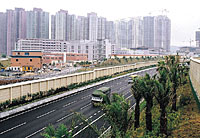
CONTROLLING NOISE POLLUTION
Noise is a common subject of complaint in Hong Kong and reducing it has been a priority for the EPD since the department was established in 1986. Controls are imposed on construction noise, noise from commercial and industrial premises and neighbourhood noise, and much effort has gone into preventing noise. Our cramped living conditions, poor planning of the past and thriving economic activities mean Hong Kong remains a fairly noisy city, but efforts to reduce the problem are continuing.
Construction Noise
Construction noise was a major problem when the EPD was set up in 1986. Pile-drivers operated 12 hours a day in urban areas, affecting one in 12 people. The Noise Control Ordinance came into effect in 1989 and included controls on construction noise that have been progressively tightened. Piling is limited to three or five hours a day in built-up areas, quieter piling equipment must be used, and other forms of noisy activities are controlled.
However, construction noise remains a problem. The EPD is looking into the issue and is also working to encourage wider adoption of quieter construction methods and use of quieter and more environmentally friendly construction equipment among builders.
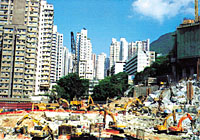
Besides, noise from domestic renovation in daytime was perceived by many people to be highly annoying when they were at home. Equipment or tools which are operated with a percussive action, such as hand-held breakers, are common sources of noise intrusiveness. We encourage the adoption of a new culture of quiet renovation, by implementing effective house rules for managing renovation work and using quieter alternative methods / tools for reducing the noise impact to the neighbourhood.
Road Traffic Noise
Road traffic noise is a concern because it still affects about 680,000 people (please see the "Spatial Distribution of Traffic Noise Problem in Hong Kong (Graphical version only)" for details).
The EPD is addressing traffic noise from new roads as well as from existing roads. More than 115 kilometres of noise barriers and enclosures have been erected since 1990, benefiting some 390,000 people. Low-noise road surfacing materials are also commonly used. The EPD also advises on the design of new roads and buildings to reduce noise.
Noise from existing roads is more difficult to tackle. Noise barriers and enclosures could be installed to some 40 identified road sections for implementation in stages under the Public Works Programme.
Furthermore, motor vehicles seeking first registration are required to comply with noise emission standards similar to those of the international requirements.
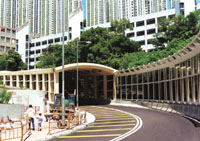
Noise from Commercial and Industrial Premises
Noise from commercial and industrial operations, such as commercial buildings, restaurants and factories, generate noise, often from their air conditioning and ventilation systems, refrigeration and pumping systems. These noise are controlled under section 13 of the Noise Control Ordinance. Complaints relating to noise from industrial / commercial activities are handled by EPD. EPD will assess the noise with reference to the Technical Memorandum and may serve the noise producer a noise abatement notice to require him/her to abate the noise within a specified time period.
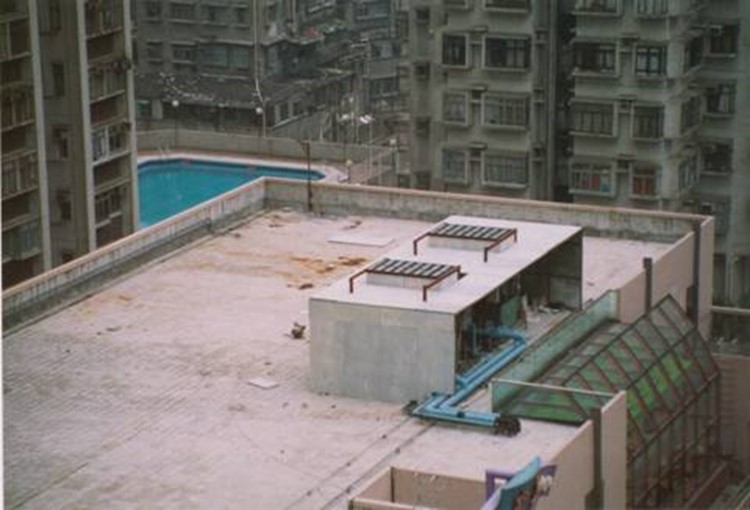
Neighbourhood Noise
Noise from loading/unloading activities, hawkers, street performers in public places, and domestic noise from television and hi-fi, air conditioners, dogs and other pets, musical instruments that can cause problems with other people are controlled under Sections 4 and 5 of the Noise Control Ordinance.
To avoid domestic noise disturbing others, residents should be considerate to their neighbours and other people by lowering the volume of your television and hi-fi, etc.; shutting doors and windows if making noise; taking extra care like avoiding impact on floor by object at night and on general holidays.
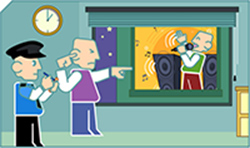
If you find the noise unbearable, you could first bring the matter to the attention of the property management agents/companies who can usually resolve the situation quickly and directly by liaising with the parties involved. If difficulties are encountered in solving the problem, you can call the local police station for immediate assistance and enforcement action. As the above provisions of the NCO are mainly carried out by the Police, the EPD will also refer the cases to the Police for follow-up enforcement as appropriate upon receipt of the relevant noise complaints. For more information on how neighbourhood noise is controlled, please refer to Problems & Solutions – Neighbourhood Noise.
Aircraft Noise
Aircraft noise is controlled by the Civil Aviation Department, which monitors the noise and requires quieter practices such as noise abatement procedures during take-off. The problem of aircraft noise was greatly reduced when the airport moved from Kai Tak to Chek Lap Kok in 1998. The Kai Tak airport was surrounded by congested residential development and 380,000 people were affected by the extremely high aircraft landing and take-off noise. In contrast, only about 200 people are affected by noise from aircrafts using Chek Lap Kok.
Planning Against Noise
Prevention is the best cure as far as noise is concerned. If homes are not built next to busy roads, then fewer people will be affected by noise. The Hong Kong Planning Standards and Guidelines have addressed noise since 1985 and standards have been progressively tightened. The EPD also gives input in the early stages of planning for new towns and developments, through the environmental impact assessment process. Tung Chung New Town, for instance, was designed with EPD involvement so residents would not be exposed to excessive aircraft or road noise.
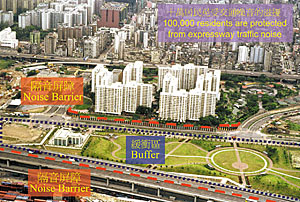
In the bigger picture, the EPD also gives input to major policies such as future transport plans and the overall future development of Hong Kong. In these instances, the department assesses the impact of the different options and supports options that have the least environmental impacts.
For more information on how noise pollution is controlled, please refer to Problems & Solutions.
What You Can Do
Be considerate of your neighbours and other people. Do not make excessive noise especially at night and on general holiday. Be mindful of lowering the volume of your TV or hi-fi. Shut your doors and windows if you engage in noisy activities.
Consider wider adoption of quieter construction methods and use of quieter and more environmentally friendly construction equipment for construction activities. Comply with the statutory requirements to obtain Construction Noise Permit and follow stipulated conditions for construction activities during evening & night and on general holidays.
Trades and industries can help to reduce noise pollution from their operations through proper selection and maintenance of their equipment and ensuring compliance with the legal requirements. Noise problems can also be prevented through better planning such as in building design of residential development. Reference can be made to Guidelines & Referencesfor a full account of compliance guides and good practices.
If you wish to make a noise complaint, you can call either the EPD or the Police. The Police is responsible for handling complaints on neighbourhood noise, noise from intruder alarms and construction sites. The EPD has four Regional Offices which handle complaint on noise from commercial and industrial premises, and construction sites.
